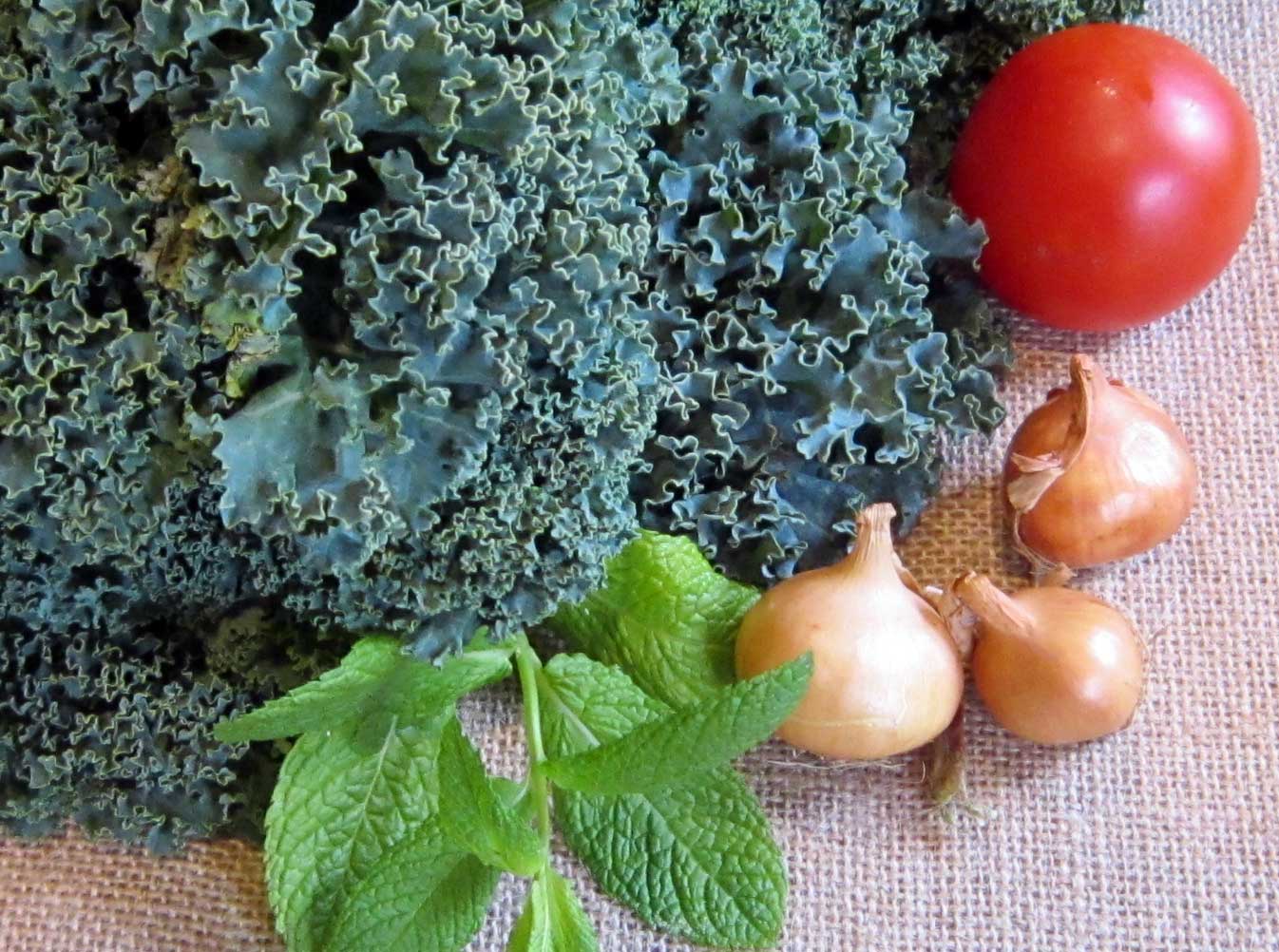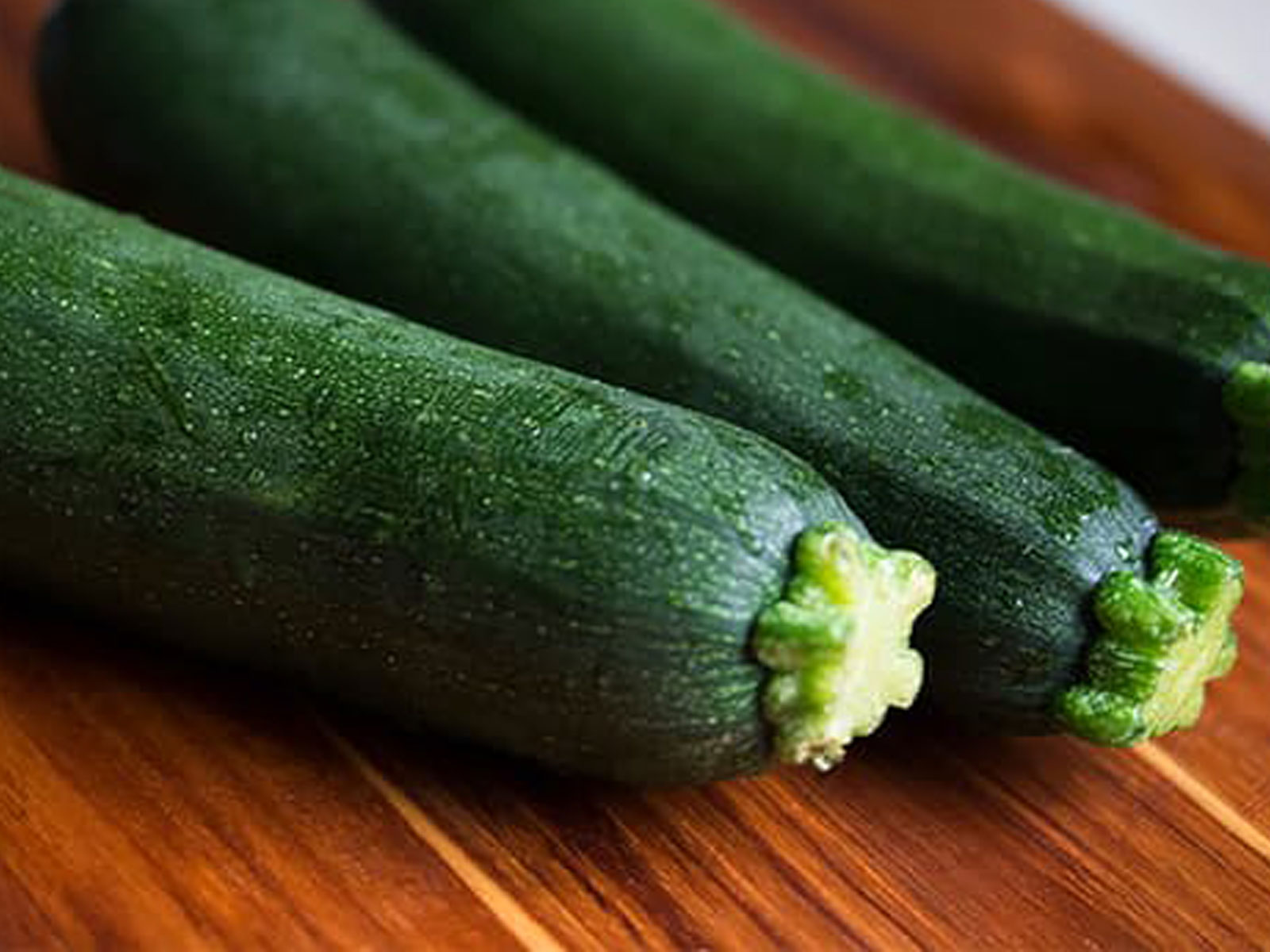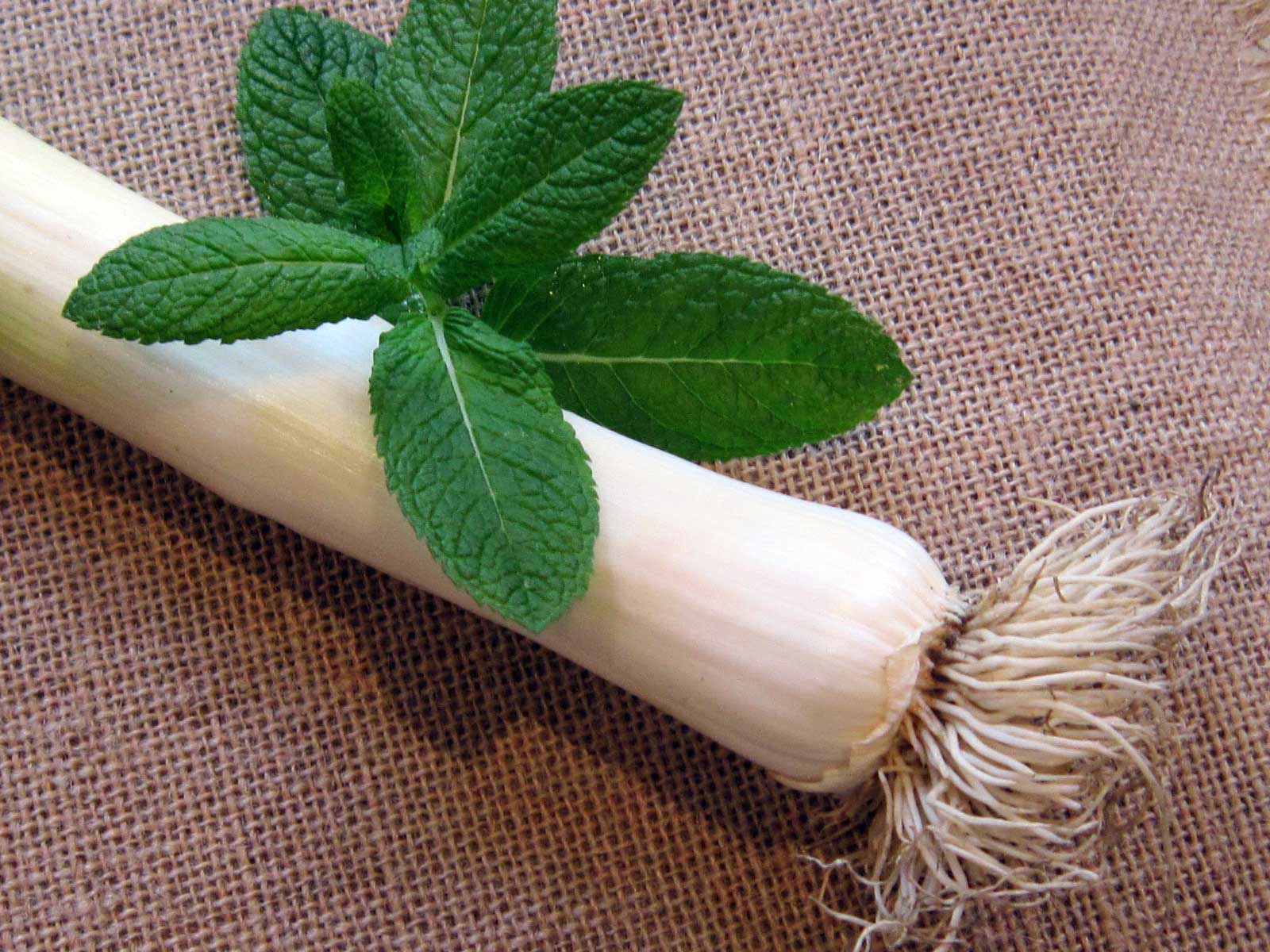Kale is one of the most nutritionally rich of the green vegetables. It contains very high concentrations vitamins A, C, and K —one cup supplies more than 600% of the RDA for vitamin K. The fibre in kale binds bile acids and helps lower blood cholesterol levels, thereby reducing the risk of heart disease. This is more effective when kale is cooked. Kale also contains lutein and zeaxanthin compounds which greatly benefit the eyes..
The ribs of the kale leaves are tough so they are usually cut away, but they are just as nutritious as the leaves so don’t discard them. Both the ribs and the leaves can be dehydrated. They can also both be made into powders.
Info |
Uses |
|
| Fresh Weight | 100 Grams | |
| Dried Weight | 14 Grams | |
| Daily Portion (Dried) | 11 Grams | |
| Prep Time | 20 minutes | |
| Drying Time | 4 to 6 hours | |
| Drying Temperature | 125 Fahrenheit/ 52 Celsius | |
Health Benefits |
Good for eyesight, lowers cholesterol, helps with depression, fights cancer, keeps heart healthy, good for weight loss | |
How to Dehydrate Kale
Equipment
- Sharp knife
- Plastic bowls
- Colander
- Cutting Board
- Food Wash
Preparation
It is easier to wash the kale once you have cut out the ribs. Then you can cut the leaves up into smaller pieces and soak them in a food wash suitable for greens.
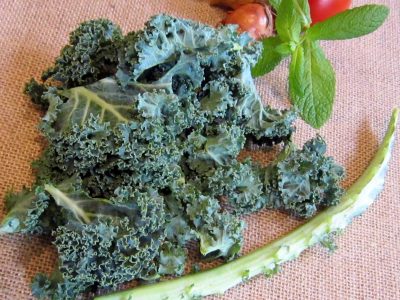
The ribs also contain good amounts of nutrition so I usually wash these too then cut them up into small pieces for making in to a powder after dehydrating.
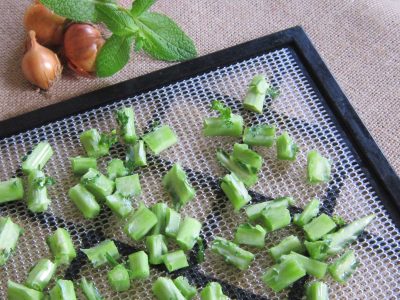
Drain the kale – if you have a salad spinner this can be used to remove a lot of the moisture although this is not essential – it would just reduce the drying time.
Dehydrating
Spread the leaves out on the dehydrator trays.
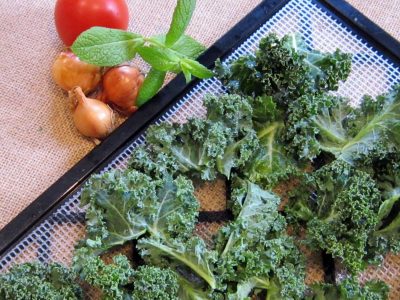 Dry at 125 Fahrenheit/ 52 Celsius until crisp. This usually takes between four to six hours.
Dry at 125 Fahrenheit/ 52 Celsius until crisp. This usually takes between four to six hours.
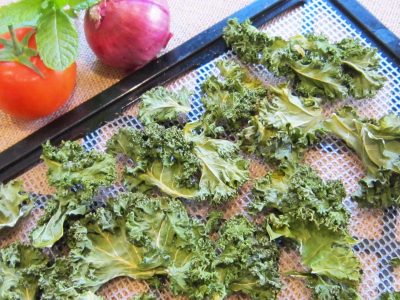
Once dried, tip the leaves into a bowl and crush them between your fingers. Kale is very fragile when dried so it is difficult to store uncrushed.
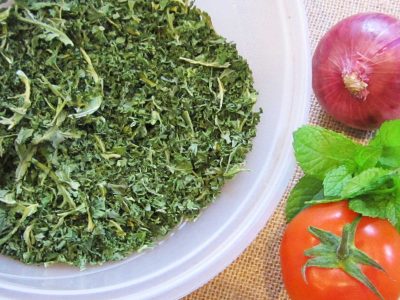
The ribs will need to be dehydrated for longer than the leaves because they are so thick. They also cannot be crushed so either store them as is and use them in stews and soups, or grind them into powder.
Conditioning
Conditioning is a process of making sure that whatever you have dried has as little moisture as possible in it. It’s a simple process and involves mixing or shaking to redistribute the kale to make sure it is completely dry. Do this once a day over a few days. If you notice any mould this means they either were not dried sufficiently, or the container was already contaminated.
Storage
Store in sealed containers in a dark area and add oxygen absorbers to help keep the contents dry.
Tip: If I am making kale powder I usually do this immediately after the kale comes out of the dehydrator as I find that is when it is at its driest.
